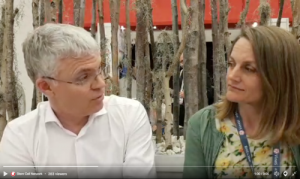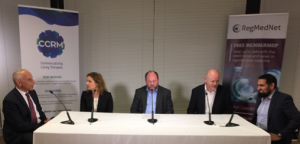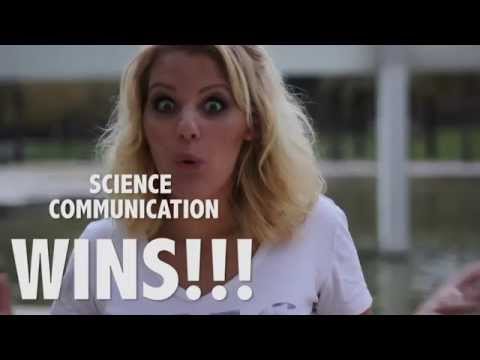The 2018 International Society for Cell & Gene Therapy annual conference (ISCT 2018) took place in Montreal, Quebec, from May 2 to 5. It brought together experts and leaders in cell and gene therapies, and regenerative medicine, working in roles from bench to bedside. The conference provided a forum for academics and industry to communicate and collaborate with their international peers regarding research, challenges and partnering opportunities.
Beyond peer-to-peer knowledge translation, conferences like ISCT 2018 can also be a source of information for science communication.
Science communication is the sharing of science-related information with non-experts. Audiences generally include the public, governments and policy-makers, and consumer-focused news outlets. Depending on the target audience or content being shared, science communications can have different objectives and, therefore, it is important for various reasons. Science communication can engage audiences to make them aware of research results, educate the public and spark an interest in science, gain support or funding for research, and influence policy or legislation.
Scientists must think beyond peer-to-peer information sharing and consider how to communicate their work in a way that resonates with non-expert audiences too. A key to this is creating messages with clear and straightforward language (without scientific jargon), and then presenting them through a tailored channel that meets the needs of the audience(s) being reached. For example, the public might find an interactive scientific exhibition engaging, a journalist might interview a scientist for a quote in a news article or broadcast, and policy-makers might review a white paper that describes the research results and associated policy implications.
So, how can one tailor the science presented at expert-oriented conferences for the non-expert? I was excited to notice the following examples of effective science communication at ISCT 2018.

L-R Dr. Guy Sauvageau being interviewed by Lisa Willemse
Twitter Live Broadcast
The Stem Cell Network broadcasted a live interview with Dr. Guy Sauvageau from ISCT 2018 on their Twitter handle, @StemCellNetwork. Dr. Sauvageau answered questions that were submitted in advance and he discussed his work, including why making more blood stem cells can result in more and better treatments for patients.
Using Twitter Live, Stem Cell Network engaged people outside of the ISCT 2018 delegates. It expanded the broadcast’s audience to include its Twitter followers and people not attending the conference who followed updates using the hashtag #ISCT2018.
Watch the two-part video here and here.

The panel featured (L-R) Robert A. Preti, CEO and President, Hitachi Chemical Co. America, Ltd.; Carolyn Yeago, Associate Director of Research, Georgia Institute of Technology; Michael May, CEO and President, CCRM (panel moderator); Robert Jones, Global Director, Advanced Therapies, Fisher Bioservices; and Qasim Rafiq, Senior Lecturer in Bioprocessing of Regenerative, Cellular and Gene Therapy, University College London.
Panel Discussion Video
Two commonly-used science communication tools – panel discussions and online videos – can help to distill complex information and perspectives. At ISCT 2018, RegMedNet and Regenerative Medicine combined them by bringing together experts to film a panel discussion. The experts broke down issues around manufacturing, preservation technologies and storage for cell therapy products, and how the industry will address the challenges in these areas so that patients can receive the treatments they need in the future.
The series of videos produced from the discussion will be posted online this summer by RegMedNet, along with a summary article.Are you now motivated to boost your science communication skills? Still wondering how to get started? Check out these posts from the Ontario Institute for Regenerative Medicine’s 2016 Science Communication Workshop for tips and best practices, specifically on the elements of a great story and how to hone your story for media.
And, if you’re still not totally sold on why science communication is so essential, watch the video below. It takes an entertaining approach to illustrating why the discipline makes a difference by explaining the reverberating effects of both science communications fails and wins from history.
Did you attend ISCT 2018 and see other examples of effective science communication there? Share in the comments.
Laine Bodnar
Latest posts by Laine Bodnar (see all)
- Right Turn: Ethics in science communication - April 8, 2025
- Regulatory affairs careers: What scientists need to know - March 18, 2025
- How to kickstart scicomm careers beyond academia - October 31, 2024







Comments